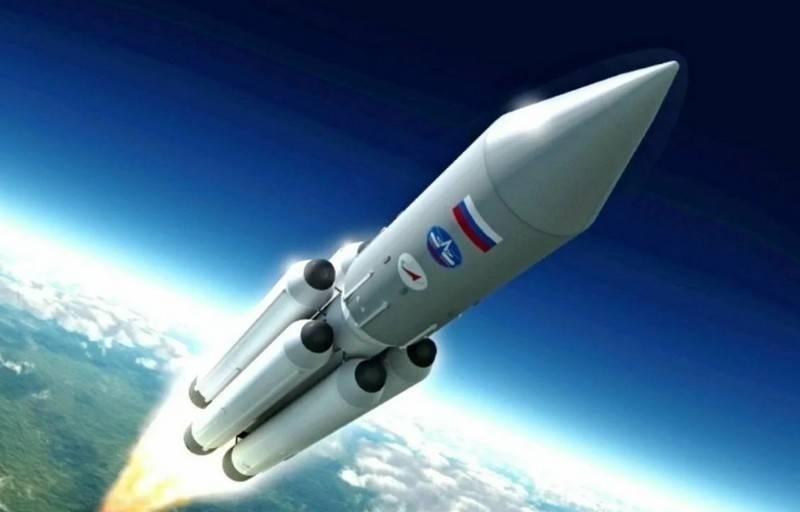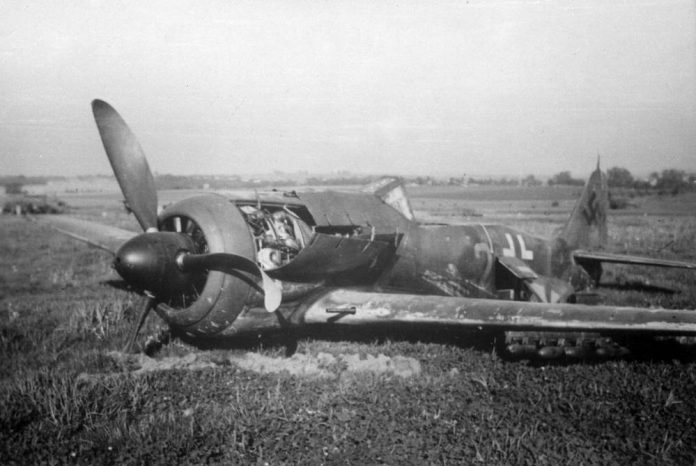
properly, here he is. The most successful angle and logical outcome. Nevertheless, the history of this aircraft is more than interesting.
Main question, which I will try to answer: why on the Eastern Front the Fokker was treated like this, coolly, and in the West, he was a true scarecrow for pilots of all levels?
But first a little history.
At all, "Fokker" FW-190 should not be called. The plane had nothing to do with the real firm of Anton Fokker. Probably, some consonance and historical memory played a role, since Fokker aircraft in the Red Army were used very actively at first. Fokker D.VII purchased, and the Fokker D.XI was even built under license at the Aviarabotnik plant.
"Focke-Wulf" is by name. And not the creators of the aircraft, and the founders of the company. At the time the aircraft entered the big life, the founding fathers of the company, Professor Heinrich Focke and Georg Wulff, not only did not participate in its management, they had nothing to do with the development of the 190th.
D. Focke was engaged exclusively in prototypes of helicopters, a G. Wulf generally died while testing the aircraft in September 1927 city
So the FW-190 was created by the real Focke-Wulf technical director Kurt Tank.
To tell, that it was a one-time luck of K. Tank, must not. His developments were the FW-200, one of the best multi-purpose aircraft of the time, whose pilots drank a lot of blood from British and American submariners, and cursed in all dialects of the Russian language "frame", i.e. FW-189, probably, the best scout and spotter of World War II.
so, Kurt Tank created the FW-190. What can be said about him?
Probably, not that, what Yakovlev wrote in his “Purpose of Life”. If you leave behind the scenes everything Yakovlev, there are two things to note: K. Tank knew how to build planes and knew how to fly them. This is important. And the second: K. Tank was an excellent fighter of the undercover front, otherwise the 190th will never see the sky, as many developments did not see, losing a fight with Bf-109.
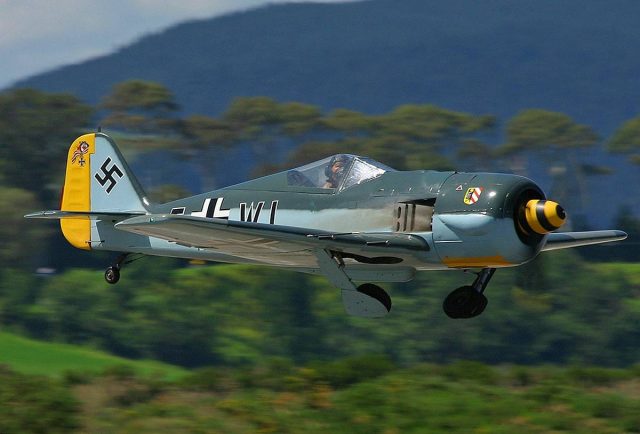
In our history, it was customary for the authors of memoirs and memoirs to talk about, how the car was "so-so". allegedly, they beat the 190th mercilessly, starting right from the moment he appeared at the front in 1943 year.
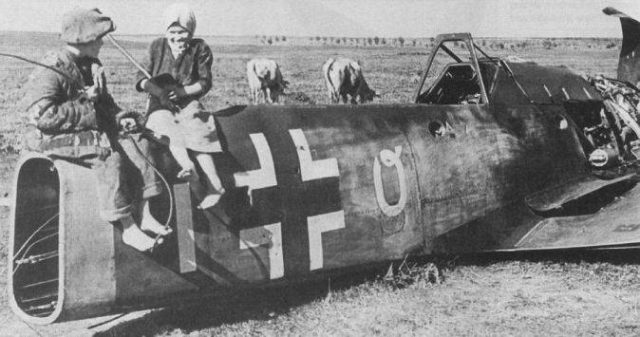
I'll say this: this estimate is not very accurate., and I will try to prove it. But let me emphasize first.: we are talking about the FW-190 fighter. It's about the fighter, and nothing else.
I will not offer praises to K. Tank, he really designed a very outstanding fighting machine. And it was then that he designed, when the whole world was in a frenzy developing fighters with water-cooled engines.
And that's where the nuances begin.. What did Mitchell do?, Messerşmitt, Polikarpov and Gurevich and all the rest? They worked on machines, in the design of which all ideas and solutions were subordinated to one: obtaining the highest maximum flight speed.
Really, if properly used the advantages of powerful 12-cylinder liquid-cooled engines, appeared in the second half of the 1930s, it was not a very difficult task. The same Spitfire is the best example of this.. Although the MiG-3 was not much inferior to him in terms of performance characteristics.
Airplanes with liquid-cooled engines really became a very real force by the beginning of World War II.. With a small cross section, unlike their counterparts with "air vents", they quite realistically approached the coveted speed in 600 kmh, and experimental options stepped over 700 kmh.
Seems like a total win., however, there were also fly in the ointment in this barrel of honey. Everything had to be paid. Engine survivability, which one large-caliber bullet could completely disable, we don’t even talk about a cannon shell, and operating a “water” engine in winter conditions was not the most pleasant task.
"Vozdushnik", on the other hand, quite normally even held airgun shells, Yes, and not in a single quantity. Memoirs on the topic, how did you attack, hiding behind the engine, there is plenty for everyone who had aircraft with such engines. And in the US, and the Germans.
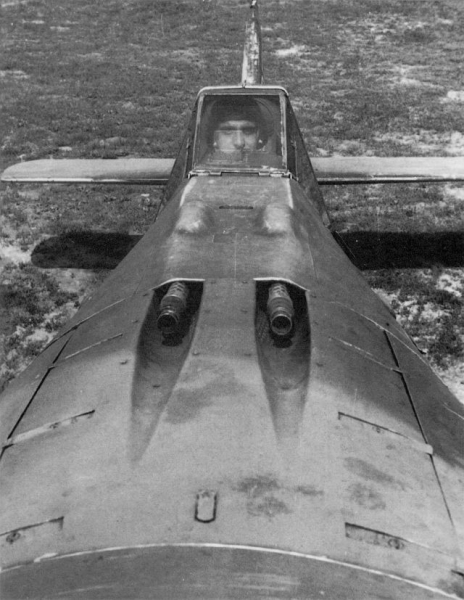
so here, K. Tank had a slightly different approach to that, what should be the ideal fighter. It was supposed to be a plane, durable without sacrificing flight performance, capable of operating from field airfields (stone in the garden of colleague Willy), easily repaired and - importantly - easily mastered by flight and technical personnel. That is, easy to manage and repair.
That is, the 190th should have, according to the idea of K. Tank, become the real "workhorse" of the war. How did it work out?
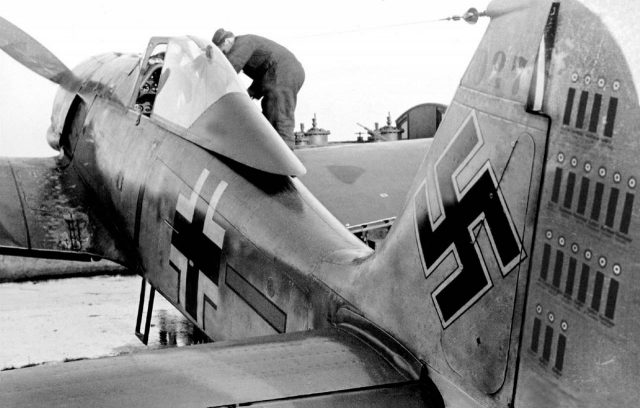
My opinion, What's on 101%. Especially when compared to Bf-109. Comparable, of course, why not compare?
I'll be distracted for a while. In two articles about the 109th Messerschmitt, I strongly supported the idea, that the Me-109 as a plane was very so-so. That pulled him out, that it was easy to manufacture (otherwise he would not have been riveted so much) and Germany had a lot of very good pilots (to 1943 of the year), who coped well with this aircraft. Advanced pilots have run out - the Me-109 as a weapon has also ended, able to really resist that allies, that the Red Army Air Force.
But in terms of the FW-190, I, perhaps, refrain from this line. 190-I was a plane of a completely different plan. Yes, it was released in slightly smaller quantities, but also pretty impressive.: more 20 thousand (13 367 fighters and 6634 fighter-bomber).
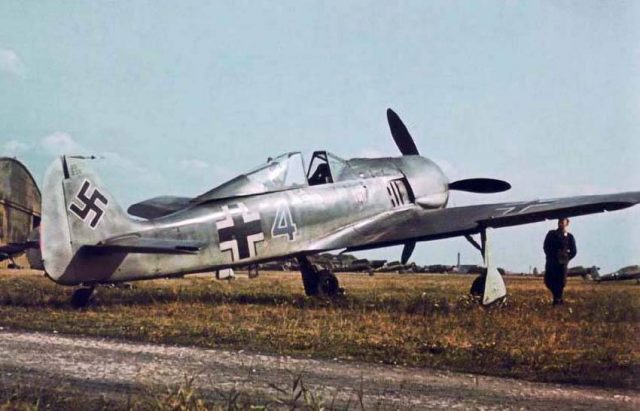
However, the viability of the structure, elevated to the fore, ease of management, ease of maintenance - these are the trump cards of K. Tank in the fight against Messerschmitt for a place at the budget feeder.
Didn't lose. And considering, how many "friends" in the Luftwaffe and around it in various committees Willy Messerschmitt made, punching his 109th, then K. Tank even had some concessions.
We will return to LTH, meanwhile it is worth noting, which in comparison with the 109th, The FW-190 had quite a few advantages.
First, survivability. The air-cooled engine was also additional armor, and it was difficult to bring him out with one rifle-caliber bullet. It was enough for liquid to kill an important pipe, and, without refrigeration, the engine screeched to a halt.
air vent, of course, could do without two, or even three cylinders.
Technical moment: there was a 12-blade fan in front of the engine, which was rotated by a gearbox in 2 times faster than a screw and creating excess pressure under the hood.
This provided excellent cooling of the front «stars», and, unlike many "colleagues", 190-and was not afraid of engine overheating during takeoff and landing. And at high speeds the fan, conversely, retarded cooling air, without overcooling the cylinders.
Another advantage over the Bf-109. "Focke-Wulf" was much less sensitive to the quality of airfields due to the wide track of the chassis, retractable towards the fuselage, not towards the wingtips, how about the Bf-109.
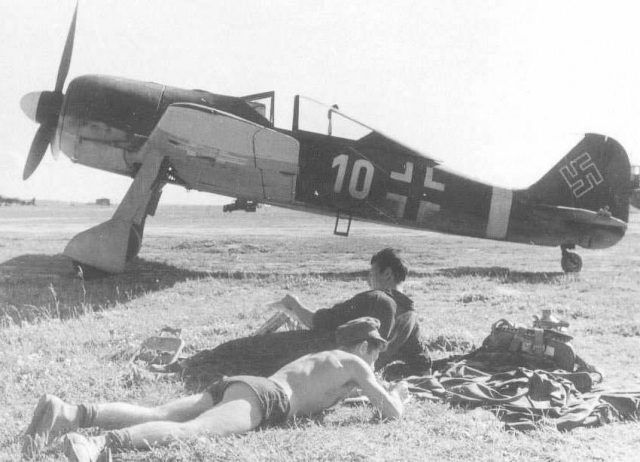
The landing gear was designed with a large margin of safety and, coupled with large-diameter wheels, ensured landing at high speed and maneuverability even on muddy ground.
Ask, what about disadvantages?
disadvantages, of course, It was. And what!
The main drawback, uncharacteristic for aircraft of that time, is the ability of the FW-190 to glide with the engine off or damaged. She was about like a concrete block, and that's why: the engine was very heavy and in the event of its failure, the aircraft instantly lowered its nose and began to dive. Perpendicular. The wing area was too small for that, to keep the 190 afloat.
Because the FW-190 has so few officially recorded forced landings. It was easier for the pilots to drop the lantern and just leave the car. If only the height would allow it. And the plane hit the chips.
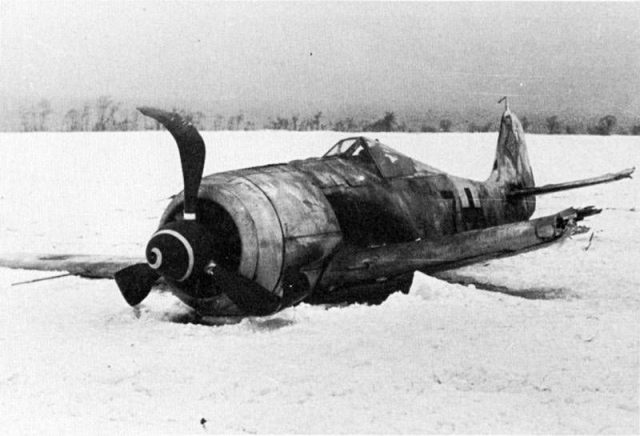
At all, towards the end of the war, a whole system of recommendations for landing the FW-190 with an idle engine was developed. If allowed (!) height, it was necessary to gain speed in a dive, near the ground, smoothly level the aircraft and set the propeller blades to the zero pitch position. Bending on impact with the ground, metal blades turned into a kind of landing skis.
And the heavy engine protected the pilot here too., demolishing any obstacles during such a landing, up to trees of medium thickness.
But anyway, the attraction was a very dubious pleasure and required simply iron nerves from the pilots.
Besides, K. Tank simply paid great attention to the review. This resulted in the design of a large canopy with a minimum of metal frame elements., which provided the pilot with exceptionally good viewing conditions for the upper hemisphere.
Got it all figured out very quickly., that gargrot is good, a better review, and the idea was simply copied. And the teardrop-shaped lantern has become quite common for a new generation of fighters., but the ancestor of all these structures was glazing, first designed by engineers «Focke-Wulf».
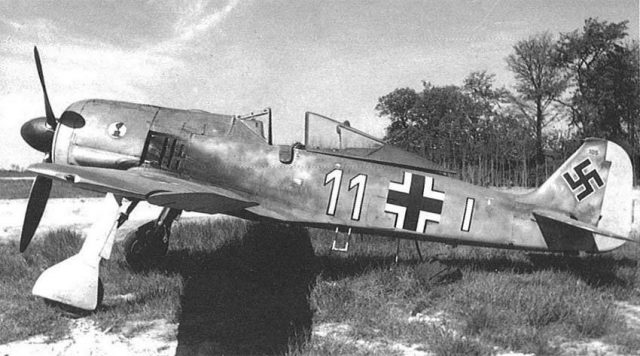
Not to say about weapons - this is not to talk about the 190th at all. Comfort and reliability are great, but armament ... It was a song.
Two synchronous "sighting" machine guns in the engine hood. At first they were standard caliber 7,92 mm, then mutated to 13 mm.
The idea was simple: first rushed "sighting" line of machine guns, when, if lead and angle were taken correctly, button pressed and...
Four guns 20 mm. Yes, not masterpieces, at the root of the MG-151 wing, further in the MG-FF wing. But there are four! And then the MG-FF was replaced by the MG-108 with a 30 mm caliber. A machine gun MG-17 to MG-131.
In this way, FW-190 became a kind of champion in terms of the ability to throw metal at the enemy. 0total mass of a second salvo Fw-190D11 or 12 It was 350 kg / min. for comparison, in Il-2, a very serious aircraft in this regard, with two VYA-23s and two ShKASs, there was “only” 265 kg / min. The enemy fighters of the 190th had even more modest. La-5 -150 kg / min, Spitfire IX - 202 kg/min and "Aerocobri" (version with 37 mm cannon and two machine guns) — 160 kg/min.
Of everything, what flew with the allies, comparable was the American "Thunderbolt", but he was armed with heavy machine guns, and the damaging effect of bullets was lower, than a high-explosive projectile.
Yes, at German guns with ballistics (especially in MG-FF) and the armor-piercing effect was so-so, but with so many shells erupting, it was not scary. Here the main thing was to get, and with such an amount, at least something flew in.
An advanced fire control system was also a plus.. She generally allowed to fire like this, how it was convenient for the pilot, simply by toggling the appropriate toggle switches. Can only fire machine guns, from any pair of guns, machine guns and two cannons to choose from, only 2 or 4 guns or even from everything at once.
Very comfortably. clear, what is not for those, who appeared in sight.
Reservations also took place.. It consisted of a 14-mm armored head, 8-mm armored seats, armored backs of the same thickness, and 8mm armor tiles, covering the pilot in the lateral projection. Not great, but a 7.62-mm bullet or a fragment of an anti-aircraft shell could delay.
The annular oil cooler in the nose of the engine was covered by a 5-mm front hood ring and an armor cap. Besides, the lower walls of the engine hood were armored, lower surfaces of the center section, the lower part of the fuselage under the gas tanks. The total weight of the armor was 110 kg, and on assault modifications it reached 320 kg.
management. I would like to talk about it boldly and separately. ALL control of the propeller group was carried out by one lever. Automation (it was in those years!) was at the highest level and, depending on the position of this lever, set the mode of operation of the supercharger, fuel supply ("gas"), ignition timing, screw pitch.
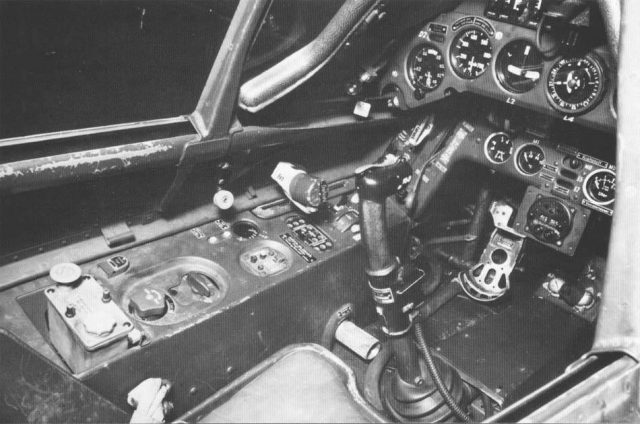
The German pilot controlled it all with a single lever. His colleagues pretended to be octopuses, jerking, moving and pressing. And automatics worked for the German, and the pilot, freed from many activities, was only concerned, how would it be more clever to catch the enemy in the sight and smack him with four guns ...
Empty aircraft FW 190A-2 of the main modification weighed 3170 kg. The normal flight weight, depending on the weapon variant, ranged from 3850 to 3980 kg. The maximum speed of the fighter at altitude 5500 m was 625 kmh, and when using the emergency one-minute mode using the afterburner system GM-1 or MW-50 - 660 km / h at an altitude of 6400 m.
Practical range at cruising speed 445 km/h did not exceed 900 km.
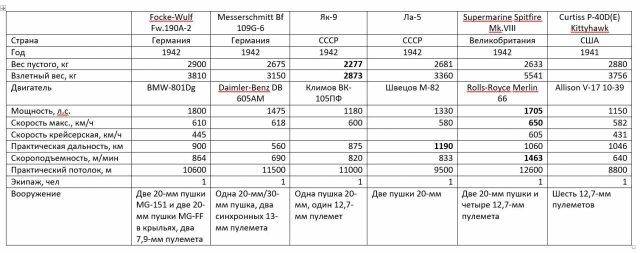
If you carefully study the table, then the conclusions are original. 190-and was in no way inferior to his opponents. Again, an average guy. Not the fastest, not the easiest, not the most agile, but…
But why, then, on the Western Front, the 190th inspired such horror to all Allied pilots from the moment of its appearance? And why was it a little different on the East. “Well, the 190th… Well, strong… Well, they beat…”.
And here's the thing. A business, it seems to me, at the time the aircraft entered the battlefield. We have the 190th appeared in normal quantities at the very end 1942 of the year, and they began to regularly meet him in the sky only in 1943.
And then the Germans had a very difficult time.
But at the beginning of his career, the FW-190 began to arrive en masse on the Western Front.. And there it turned out, that there is simply nothing to fight with him. The only one in 1942 g. fighter, capable of more or less adequately resisting the FW-190А-3, It was «Spitfire» Series IX.
The problem was, that the Spitfires were, but they were not! Against 400 "Focke-Wulf" in the summer 1942 of the year the Royal Air Force could field only TWO squadrons «Spitfire» IX.
It is quite clear, what about the rest (old Spitfires, Seafires and Hurricanes) German pilots did everything, what they wanted.
So the nickname, given by British pilots, The Flying Butcher was well deserved.
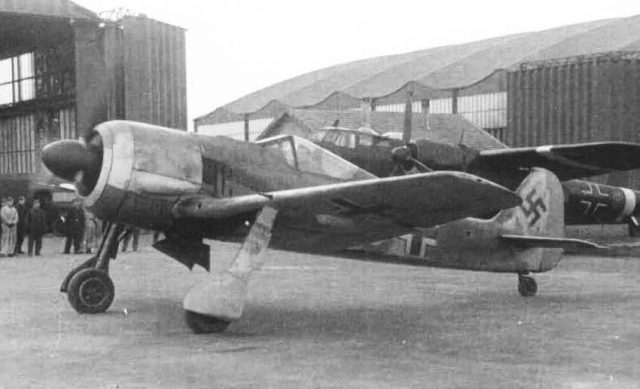
And so it happened, that until the moment of mass entry into the troops «Spitfire» IX series "Focke-Wulf" provided the Luftwaffe with complete air superiority. And that advantage, what the British won in the hardest battles of the "Battle of Britain", was simply lost in battles with a new car.
And everything would be nothing, but 1943...
As for the Eastern Front, then I'll just say: our FW-190 is somewhat late. Our pilots have already learned how to fight and shoot down everything. Besides, we got planes, which allowed to play with the FW-190 if not on equal terms ...
But in general, what kind of equalities or inequalities are we talking about, if ours fought on everything, what could fly and shoot?
And when did the Yak-9 appear, who lost in arms, but they outperformed the "iron" FW-190 in maneuver, La-5F, which were generally comparable in terms of performance characteristics and "Aircobra". The latter is debatable., but they beat...
by the way, English, abandoning the R-39, should have gnawed their elbows, because "Cobra", if used correctly, could completely take out the "Focke-Wulf" brains.
You can continue to talk for a long time and compare performance characteristics and performance characteristics, but it all comes down to one thing. If BMW or Junkers engineers managed to create a workable engine with a capacity of 2500+ hp, then the fate of the Focke-Wulf could have turned out a little differently.
but alas, the plane continued to get heavier and they began to plug holes, formed in attack and bomber aviation. It was a definite mistake, and instead of a heavy fighter with good performance, they began to produce, in general, not bad, at the level of IL-2 in 1940 year, attack aircraft and fighter-bombers.
However, the lack of the ability to defend in the rear hemisphere put an end to this idea., and it became punishable.
Looking into the future, FW-190 was a machine with very great potential. Much bigger, than the "Messerschmitt-109". More reliable, more convenient in terms of application.
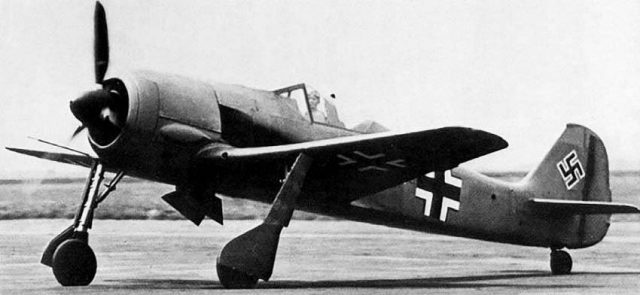
"Fokke-Wulf" executed, as I already said, no motor, with which this car could withstand Thunderbolts and Mustangs, but this will be continued, not to overload.
To be continued…
/Roman Skomorokhov, topwar.ru/







